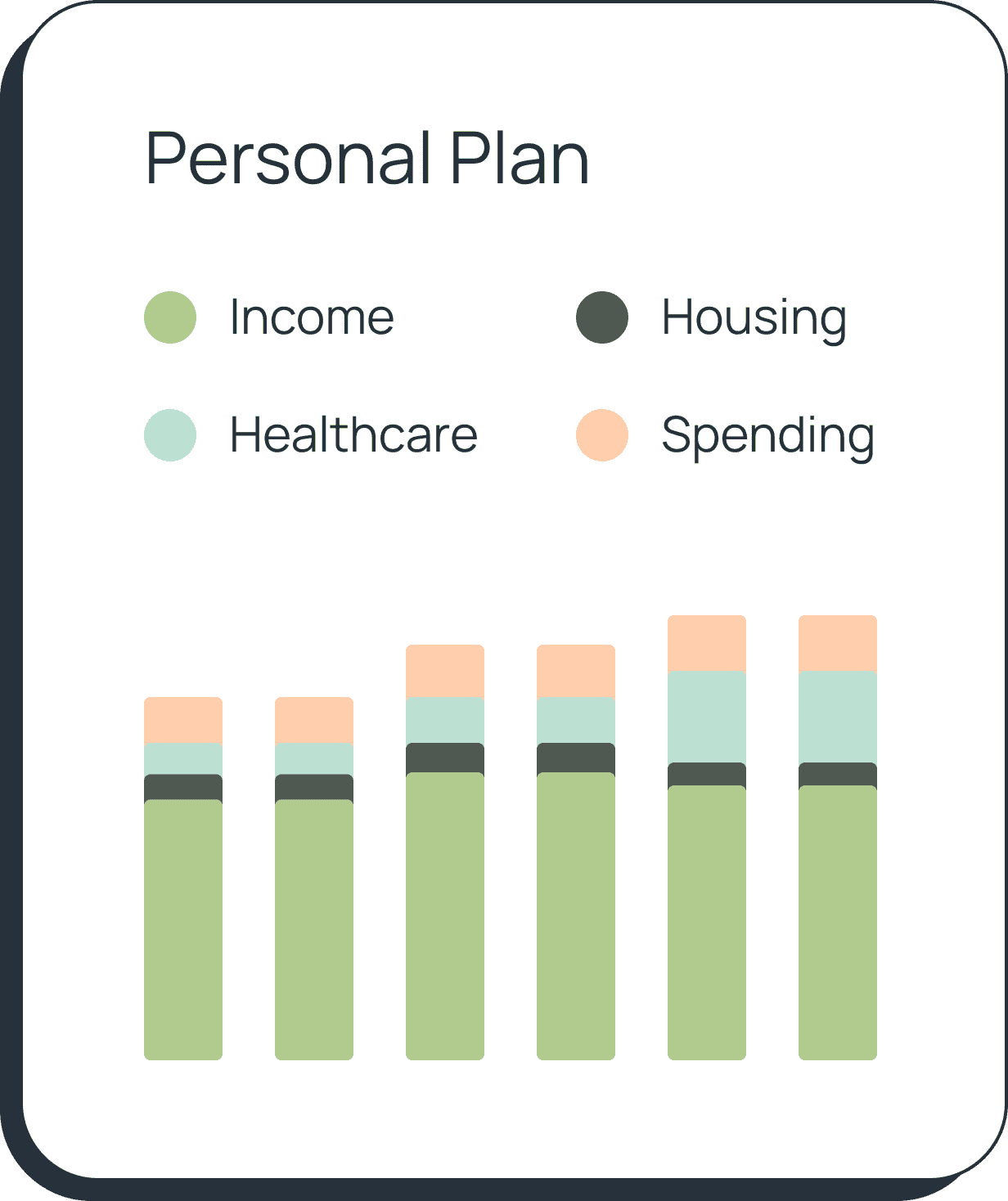Retirement Accounts
A Roth 401(k) offers the same tax-free retirement benefits as a Roth IRA, but with a few additional requirements. To access your earnings without taxes or penalties, you’ll need to meet both a minimum age and a minimum holding period. These rules are important to understand as you approach retirement so you can plan your distributions strategically and avoid unexpected tax consequences.

R. Tyler End, CFP®
•
Published February 5th, 2025
•
Updated March 7th, 2025
Table of Contents
Key Takeaways
Roth 401(k) contributions are made with after-tax dollars, allowing for tax-free withdrawals in retirement.
You must be at least 59½ years old and have held the account for at least five years to take qualified withdrawals without taxes or penalties.
Early withdrawals may result in income tax and a 10% penalty on the earnings portion unless an exception applies.
A Roth 401(k) offers the same tax-free retirement benefits as a Roth IRA, but with a few additional requirements. To access your earnings without taxes or penalties, you’ll need to meet both a minimum age and a minimum holding period. These rules are important to understand as you approach retirement so you can plan your distributions strategically and avoid unexpected tax consequences.
Unlike traditional 401(k) plans, Roth 401(k)s are funded with after-tax dollars. That means qualified withdrawals in retirement are not taxed, but you must wait until certain conditions are met to access your earnings penalty-free.
What is a Roth 401(k)?
A Roth 401(k) combines features of a traditional 401(k) and a Roth IRA. Like a traditional 401(k), it's an employer-sponsored retirement plan. However, the key difference lies in how it's taxed. With a Roth 401(k), you contribute after-tax dollars, so qualified withdrawals in retirement are tax-free.
Because of this tax structure, Roth 401(k) accounts follow some unique rules. You must meet specific age and timing requirements to withdraw earnings without penalties. That said, many of the core features remain the same as a traditional 401(k), including employer matching options and annual contribution limits.
For 2024, you can contribute up to $23,000 to a Roth 401(k). If you are age 50 or older, you can make an additional $7,500 catch-up contribution, bringing your total to $30,500. In 2025, the contribution limit increases to $23,500, with the catch-up contribution remaining at $7,500, allowing those 50 and older to contribute up to $31,000.
Questions about your retirement accounts?
We're here to help. Schedule your FREE retirement consultation today.Roth 401(k) Withdrawal Rules
To take tax-free and penalty-free withdrawals from a Roth 401(k), you must meet two conditions: you must be at least 59½ years old, and your account must have been open for at least five years. These two requirements work together to define what the IRS considers a qualified distribution.
There are exceptions. If you retire or leave your job in the calendar year you turn 55 or later, you may be able to withdraw from that employer’s Roth 401(k) without paying the 10 percent early withdrawal penalty. This rule, often called the Rule of 55, applies only to the account linked to your most recent employer. It doesn’t cover Roth 401(k)s from previous jobs unless you roll them into your current plan before leaving.
If you withdraw funds before age 59½ and don’t meet an exception, the IRS will charge a 10 percent penalty on the earnings. You’ll also owe income tax on those earnings. However, if you become permanently disabled, or if your account is passed on to beneficiaries after your death, the IRS waives both the penalty and taxes.
While Roth IRAs are not subject to required minimum distributions (RMDs), Roth 401(k)s are. You must begin taking RMDs at age 73 (or 75 if you turn 74 after December 31, 2032). To avoid this, many retirees roll their Roth 401(k) into a Roth IRA, which allows them to keep their money invested without mandatory withdrawals.
Taxes on Unqualified Withdrawals
If you withdraw funds from your Roth 401(k) before meeting the IRS requirements, your distribution is considered unqualified. This means you’ll face not only a 10 percent early withdrawal penalty but also taxes on any investment earnings included in the withdrawal.
The good news is that you won’t be taxed on the full amount you take out. Your original contributions were made with after-tax dollars, so they are never taxed again. However, any growth your account earned will be taxed as regular income if you don’t meet the age or five-year rule.
To avoid taxes and penalties, wait until you’re at least 59½ and make sure your Roth 401(k) has been open for at least five years. That’s when both your contributions and earnings become fully tax-free.
Rolling Over Funds in a Roth 401(k)
If you don’t plan to take withdrawals by the time required minimum distributions (RMDs) begin, one way to avoid them is to roll your Roth 401(k) into a Roth IRA. Roth IRAs are not subject to RMDs, so this move can give you more flexibility and help preserve your retirement savings.
Keep in mind, when you roll funds from a Roth 401(k) to a Roth IRA, the five-year clock resets unless you already had a Roth IRA open for at least five years. That means you may need to wait another five years before withdrawing earnings tax-free, even if you already satisfied the Roth 401(k) holding requirement.
Rolling over is a common strategy for those who want continued tax-free growth without being forced to take distributions in retirement. It’s important to plan the rollover well in advance and consult a tax or financial advisor if you’re unsure how it affects your withdrawal timing.
Borrowing from a Roth 401(k)
If you need access to your retirement funds but want to avoid taxes and penalties, some Roth 401(k) plans allow you to take out a loan. This option depends on your employer’s plan rules, but it can offer short-term flexibility when used responsibly.
In most cases, you can borrow up to $50,000 or 50 percent of your vested account balance, whichever is less. Some plans may allow a minimum loan of up to $10,000. You must repay the loan within five years, with payments made at least quarterly. The interest you pay goes back into your own account, so you’re effectively repaying yourself.
If you fail to repay the loan on time, the remaining balance is treated as a distribution. In that case, it will be taxed and may also incur a 10 percent early withdrawal penalty if you don’t qualify for an exception.
Final Thoughts
A Roth 401(k) offers the advantage of tax-free income in retirement, making it a valuable tool for long-term planning. While contributions are made with after-tax dollars, the ability to grow your savings and withdraw earnings tax-free can lead to meaningful savings over time.
If you're thinking about taking an early withdrawal, review the rules carefully and consider using a Roth 401(k) withdrawal calculator to estimate potential taxes or penalties. It’s always a good idea to consult a Certified Financial Planner® to help you create a strategy that supports both your short-term needs and long-term retirement goals.
Share this advice

Tyler is a Certified Financial Planner® and CEO & Co-Founder at Retirable, the retirement peace of mind platform. Tyler has nearly 15 years of experience at leading companies in the wealth management and insurance industries. Before Retirable, Tyler worked as Head of Operations Expansion at PolicyGenius, expanding the company’s reach into new products — turning PolicyGenius into an industry-leading disability and P&C insurance distributor. Before working at PolicyGenius, Tyler worked as Wealth Management Advisor at prominent financial services organizations.
As an advisor, Tyler played an integral role in helping clients define goals, achieve financial independence and retire with peace of mind. Through this work, Tyler has helped hundreds of thousands of people get the financial planning and insurance advice they need to succeed. Since founding Retirable, Tyler’s innovative approach to retirement planning has been featured in publications such as Forbes, Fortune, U.S. News & World Report, and more.
Share this advice

Tyler is a Certified Financial Planner® and CEO & Co-Founder at Retirable, the retirement peace of mind platform. Tyler has nearly 15 years of experience at leading companies in the wealth management and insurance industries. Before Retirable, Tyler worked as Head of Operations Expansion at PolicyGenius, expanding the company’s reach into new products — turning PolicyGenius into an industry-leading disability and P&C insurance distributor. Before working at PolicyGenius, Tyler worked as Wealth Management Advisor at prominent financial services organizations.
As an advisor, Tyler played an integral role in helping clients define goals, achieve financial independence and retire with peace of mind. Through this work, Tyler has helped hundreds of thousands of people get the financial planning and insurance advice they need to succeed. Since founding Retirable, Tyler’s innovative approach to retirement planning has been featured in publications such as Forbes, Fortune, U.S. News & World Report, and more.



